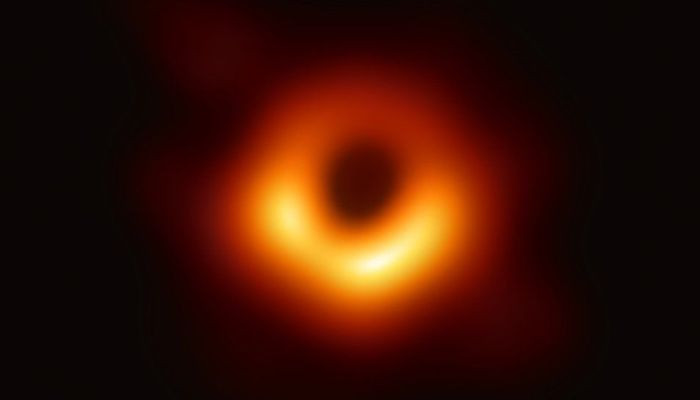First ever black hole image released
 3834 Thursday, 11 April, 2019, 01:40 Astronomers have taken the first ever image of a black hole, which is located in a distant galaxy. It measures 40 billion km across - three million times the size of the Earth - and has been described by scientists as "a monster". The black hole is 500 million trillion km away and was photographed by a network of eight telescopes across the world. Details have been published today in Astrophysical Journal Letters. It was captured by the Event Horizon Telescope (EHT), a network of eight linked telescopes. Prof Heino Falcke, of Radboud University in the Netherlands, who proposed the experiment, told BBC News that the black hole was found in a galaxy called M87. "What we see is larger than the size of our entire Solar System," he said. "It has a mass 6.5 billion times that of the Sun. And it is one of the heaviest black holes that we think exists. It is an absolute monster, the heavyweight champion of black holes in the Universe." The image shows an intensely bright "ring of fire", as Prof Falcke describes it, surrounding a perfectly circular dark hole. The bright halo is caused by superheated gas falling into the hole. The light is brighter than all the billions of other stars in the galaxy combined - which is why it can be seen at such distance from Earth. The edge of the dark circle at the centre is the point at which the gas enters the black hole, which is an object that has such a large gravitational pull, not even light can escape. The image matches what theoretical physicists and indeed, Hollywood directors, imagined black holes would look like, according to Dr Ziri Younsi, of University College London - who is part of the EHT collaboration. "Although they are relatively simple objects, black holes raise some of the most complex questions about the nature of space and time, and ultimately of our existence," he said. "It is remarkable that the image we observe is so similar to that which we obtain from our theoretical calculations. So far, it looks like Einstein is correct once again." But having the first image will enable researchers to learn more about these mysterious objects. They will be keen to look out for ways in which the black hole departs from what's expected in physics. No-one really knows how the bright ring around the hole is created. Even more intriguing is the question of what happens when an object falls into a black hole. Prof Falcke had the idea for the project when he was a PhD student in 1993. At the time, no-one thought it was possible. But he was the first to realise that a certain type of radio emission would be generated close to and all around the black hole, which would be powerful enough to be detected by telescopes on Earth. He also recalled reading a scientific paper from 1973 that suggested that because of their enormous gravity, black holes appear 2.5 times larger than they actually are. These two factors suddenly made the seemingly impossible, possible. After arguing his case for 20 years, Prof Falcke persuaded the European Research Council to fund the project. The National Science Foundation and agencies in East Asia then joined in to bankroll the project to the tune of more than £40m. |

Japan Unveils Human Washing Machine, Now You Can Get Washed Like Laundry (video)
751801.12.2025, 20:45
Chinese humanoid robot sets Guinness World Record with 106-km inter-city walk (video)
857424.11.2025, 16:30
Musk։ Optimus will be able to eliminate poverty and provide everyone with a universal high income (video)
1014423.11.2025, 12:45
AGMI researchers expose the hidden role of female perpetrators in the Armenian Genocide (photo)
513213.11.2025, 21:15
LVM3-M5 mission successfully launches CMS-03 satellite (video)
784602.11.2025, 21:17
Google разработала квантовый алгоритм, работающий в 13 тыс. раз быстрее алгоритма суперкомпьютеров
763122.10.2025, 23:44
Apple introduces the powerful new iPad Pro with the M5 chip
842215.10.2025, 23:34
Apple debuts iPhone 17
854809.09.2025, 23:08
